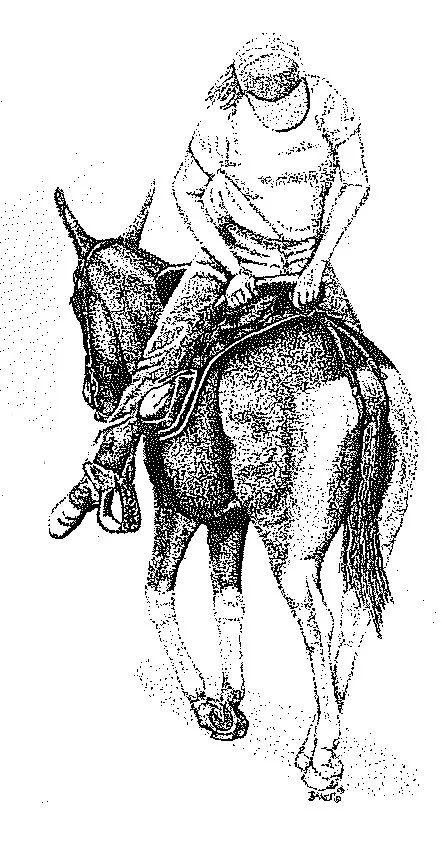How Important Is a Crupper?
By Max Harsha, Cliff, NM
Originally published in the September 1998 issue
First of all, let me explain just what a crupper is, for the benefit of those new to the mule game. A crupper is a strap connected to the back of the saddle in various ways, which comes back to the area of the tail head and splits to tie into a rounder type of material that goes under the tail, all of which is to hold a saddle back in place.
The next question asked is usually, "Why haven't I seen this on horses?" I guess the best way to say this is, a horse generally has a fairly high wither to hold a saddle back in place, and as a general rule, a mule doesn't. So, in order to keep a saddle from sliding forward, you need some sort of restraint. You can use different methods to do this, one of which I describe in my book The Mule Skinners Bible, is to put your back cinch back in the flank area, which in most cases will keep the saddle back very well, and to the amazement of most people, a mule will tolerate this, where a horse won't. The only thing wrong with this is if you are in mountain country, where you might be coming downhill for a prolonged period of time, the mule's stomach may tend to lose some of its bulk, and your back cinch will loosen and let your saddle slide forward.
Another means of securing the saddle is a britchen, which works very well, but it's much more cumbersome and, to a certain degree, is rather restraining. Plus, it has a tendency to rub hair off areas on the back legs. However, I do use a britchen on the pack mules, but on some mules find it advantageous to also use a crupper in combination with a britchen. You will find this combination used on some draft harnesses.
Now, in using a britchen, I notice on some mules when going down hill, that there seems to be a constant saddle movement, more so than you get with a crupper. Personally, I like a good flaxseed-filled crupper, as it makes a softer feel under the mule’s tail, and if you love your mule as I do mine, you want to make him as comfortable as possible.
Now, let me get to the point of how important it is to keep a saddle in place on your mule. On a lot of mules, which don't have a lot of wither and have a larger than average stomach, this combination will let the saddle go forward to the point where the front cinch is rubbing behind the front legs and causing a cinch sore. You need to avoid this because not only does it rub the mule raw in this area, but it may also cause him to be hard to get on, as it is very irritating to him when the saddle moves while you are mounting. Also, by letting the saddle move forward, you can cause the bars of the saddle to rub the mule in an abnormal location, causing him to sore-up in that area.
I have designed a crupper that is easy to adjust to keep the saddle where it needs to be, and by eliminating the buckles from the back by the tail head, it keeps the mule from continually hanging his tail in these buckles.
With proper equipment, you can have a good time with your mule and let him enjoy a good time, too.

